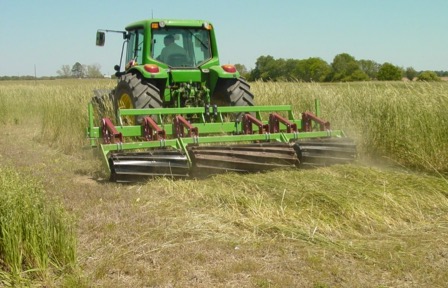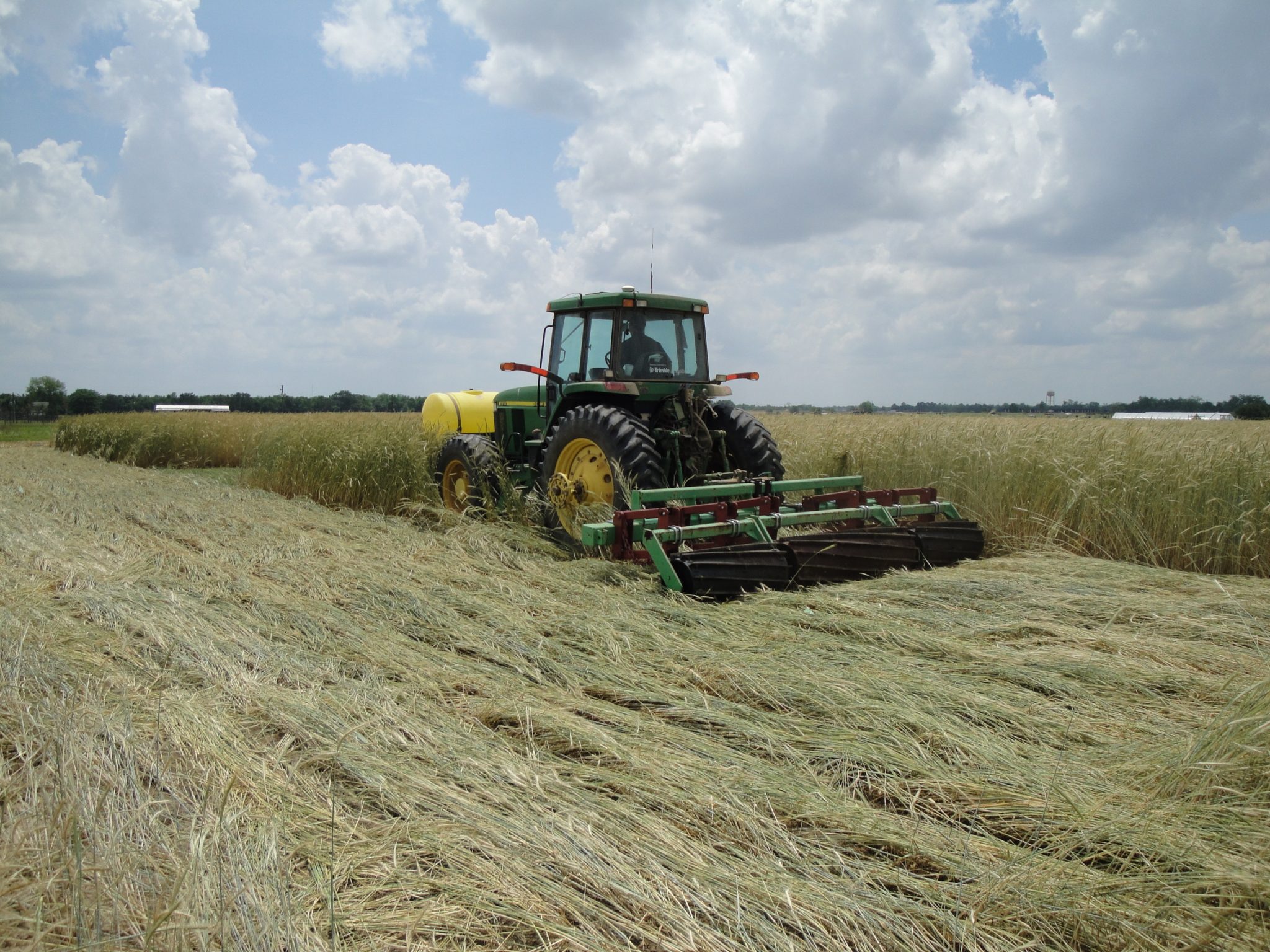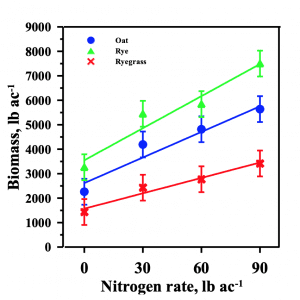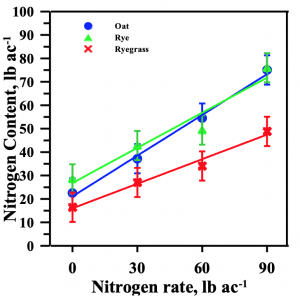Cover Crops

A winter cover crop can benefit the soil and/or subsequent crop, but cover crops are not harvested for feed or sold as a commodity (Figure 1). Cover crop benefits include soil erosion protection, increased soil organic C accumulation, weed suppression, and soil moisture conservation. Coarse-textured, degraded soil found throughout the Southeast can be very receptive to these benefits. In general, benefits improve as surface biomass increases, and surface biomass persistence is extended. Persistence is key because hot, humid conditions in the summer speed up surface biomass decomposition.
Despite benefits, there is a cost for establishing, managing, and terminating cover crops. Coarse-textured soils and high average rainfall amounts combine to limit inorganic N available for uptake so N fertilizer applications can ensure adequate cereal biomass production. Information about expected biomass levels produced from N fertilizer helps growers manage biomass production costs within their cover crop goals.

Figure 1. Rye roller operation at termination.
A four-year experiment (2009-2012) was conducted in Headland, Alabama. Biomass production for oat (Avena sativaL.), rye (Secale cerealeL.), and ryegrass (Lolium multiflorumL.) was compared across four N rates (0, 30, 60, and 90 lb N/ac.) applied as ammonium nitrate. All cover crops were established between the first and third week of November and terminated between the second and third week of April.
Average biomass production was 5510 lb/ac for ‘Wrens Abruzzi’ rye, 4230 lb/ac for ‘Harrison’ oat and 2510 lb/ac for ‘Marshall’ ryegrass. Average biomass production varied by growing season and differences were attributed to rainfall and growing degree days. Average biomass production for each species also varied across N rates (Figure 2). Slopes for each species indicated rye was 1.2 times more responsive to applied N compared to oat and ryegrass (data not shown).
Nitrogen contents were similar between oat and rye but averaged 53% greater than ryegrass. Nitrogen contents ranged from 22 to 67 lb N/ac. (Figure 3) across species. A C/N ratio >30:1 indicates N release and decomposition from residues will be slow. Rye (55:1) produced the greatest C/N ratio, followed by oat (44:1), and ryegrass (38:1) indicating each species would decompose slowly. The greatest C/N ratio and superior biomass production observed for rye made rye the most resistant species to decomposition. This aspect translates into a longer surface protection period compared to oat and ryegrass. Nitrogen uptake efficiency (NUE) averaged 54% and 57% for oat and rye, respectively. Average NUE for ryegrass was 21% due to low N content and biomass production.
Rye and oat performed similarly across N rates, while ryegrass lagged behind for all measured values. Single species winter cereal cover crops like rye and oat benefit from N fertilizer applications by enhancing biomass levels and benefits.
- Figure 2. Four-year average biomass production across N rates for oat, rye, and ryegrass.
- Figure 3. Four-year average N contents across N rates for oat, rye, and ryegrass.
Written by Kip Balkcom, a research agronomist with USDA-ARS, National Soil Dynamics Laboratory. Balkcom is also an associate affiliate professor in the Auburn University College of Agriculture’s Department of Crop Soil and Environmental Sciences. Approved for publication by Audrey Gamble, Alabama Extension soil scientist.



